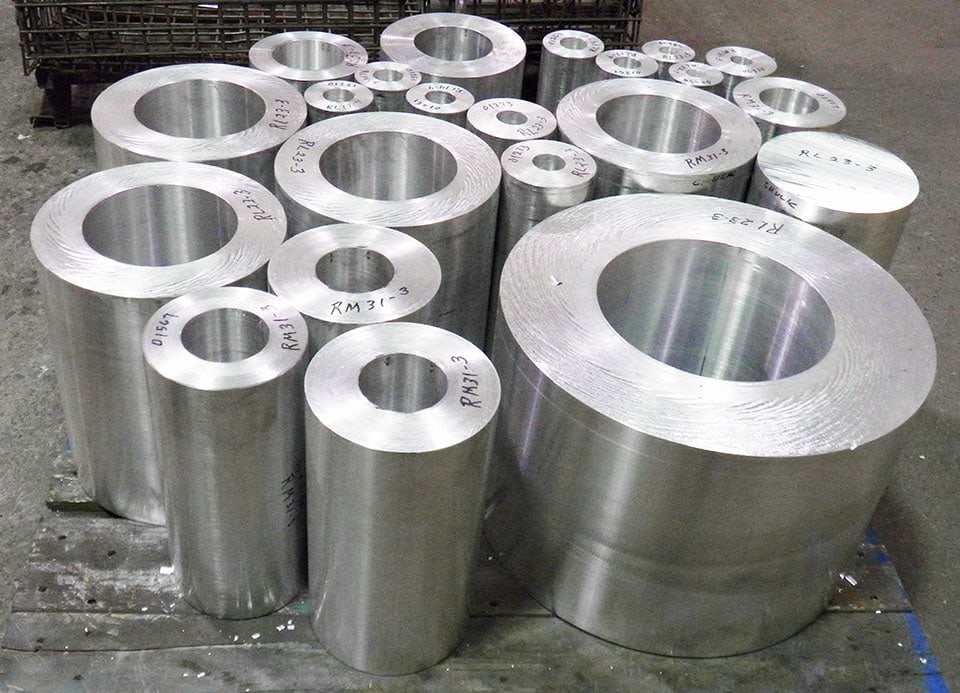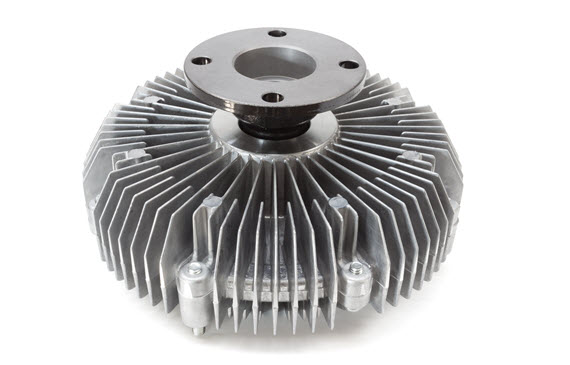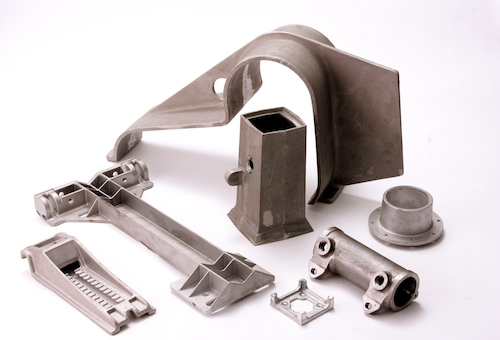The commitment of Wisconsin Aluminum Foundry to excellence
Checking Out the Versatile Makes Use Of and Applications of Light Weight Aluminum Castings in Modern Industries
Light weight aluminum castings have ended up being indispensable to various contemporary industries due to their unique residential properties. They provide significant advantages in weight reduction, thermal conductivity, and corrosion resistance. From auto developments to applications in durable goods and building, their versatility is exceptional. Yet, real degree of their influence expands beyond immediate benefits, hinting at wider ramifications for sustainability and effectiveness. What lies ahead for light weight aluminum spreadings in an ever-evolving commercial landscape?
Automotive Sector Innovations
The vehicle market has significantly welcomed aluminum castings to boost car efficiency and efficiency. By utilizing light weight aluminum, suppliers can produce lighter parts, which add to improved gas economic climate and decreased discharges. Secret applications include engine blocks, transmission instances, and structural components, where the material's strength-to-weight proportion provides resilience without adding excess weight.
Light weight aluminum castings likewise offer premium thermal conductivity, which helps in better warmth dissipation, consequently improving engine performance. Additionally, developments in casting modern technologies, such as die casting and sand casting, allow the manufacturing of intricate geometries, permitting ingenious styles that optimize area and performance.
The recyclability of light weight aluminum aligns with sustainability objectives in the auto industry, promoting eco pleasant practices. As the industry remains to innovate, using light weight aluminum spreadings is likely to increase, driving more developments in automobile layout and efficiency.
Aerospace Applications and Improvements
While the aerospace market continues to prioritize weight reduction and fuel effectiveness, light weight aluminum spreadings have become an important product selection for various applications. Their lightweight nature, coupled with high strength-to-weight ratios, enables for substantial renovations in airplane efficiency and performance. Light weight aluminum spreadings are commonly used in structural components, such as fuselage frames and wing parts, where decreasing weight is vital.
Recent improvements in aluminum casting technologies, including boosted alloy formulas and precision spreading strategies, have further improved the product's performance abilities. These advancements allow the production of intricate geometries and detailed styles while maintaining architectural stability. Additionally, light weight aluminum's superb corrosion resistance warranties durability and reliability in rough aerospace atmospheres.
As the aerospace sector progressively embraces sustainability, aluminum spreadings provide a recyclable solution that lines up with environmentally friendly techniques, making them an essential element in the growth of next-generation aircraft.
Durable Goods and Everyday Products
As consumers significantly seek light-weight yet long lasting materials for day-to-day products, light weight aluminum spreadings have obtained popularity in various customer items. The one-of-a-kind properties of aluminum, including its resistance to corrosion and outstanding thermal conductivity, make it an excellent option for items like cooking equipment, household devices, and outside gear. As an example, aluminum cast pots and frying pans provide also heat distribution, improving cooking performance. Additionally, the use of aluminum in products such as bike frames and luggage ensures an equilibrium in between toughness and transportability. Manufacturers appreciate aluminum castings for their adaptability, as they can be conveniently built right into intricate forms while preserving structural stability. Additionally, the capability to reuse light weight aluminum without weakening its buildings lines up with expanding consumer preferences for sustainable products. In general, aluminum castings are important to the manufacturing of long lasting, practical, and visually pleasing consumer items, meeting the needs of modern lifestyles.
Construction and Architectural Makes Use Of
Light weight aluminum castings have actually come to be a necessary component in construction and building style, particularly as a result of their stamina and lightweight nature. These residential or commercial properties make aluminum a perfect selection for different applications, including architectural aspects, facades, and attractive features - Aluminum Castings. Home builders and engineers significantly make use of light weight aluminum spreadings for home window frames, doors, and roof systems, improving both functionality and aesthetics. The product's resistance to rust further expands its lifespan, lowering maintenance prices and guaranteeing durability in diverse ecological conditions
Additionally, aluminum can be quickly built into complex designs, permitting cutting-edge architectural expressions. Its flexibility promotes the creation of customized pieces that fulfill specific style demands, from ornate railings to complicated assistances. As sustainability comes to be a priority, aluminum's recyclability adds to its charm in environment-friendly building and construction practices. Overall, aluminum castings are reinventing the building and construction sector by offering light-weight, long lasting, and aesthetically enticing remedies.
Electric and Digital Parts
Aluminum castings play a vital function in the manufacturing of lightweight electric enclosures, which enhance portability and efficiency in numerous applications. On top of that, their superb thermal conductivity makes them ideal for warmth sinks, ensuring peak efficiency and long life of electronic parts. Moreover, light weight aluminum's conductive properties add to its usage in different electrical conductors, emphasizing its importance in modern-day innovation.
Lightweight Electrical Units
Light-weight electrical units play a crucial function in safeguarding delicate electronic parts from ecological variables and physical damages. Constructed from aluminum spreadings, these rooms are valued for their strength-to-weight ratio, making them ideal for numerous applications across industries. Their light-weight nature aids in lowering general system weight, which is vital in mobile and portable electronic devices. Aluminum's corrosion resistance boosts durability, expanding the life expectancy of the encased components. The capability to mold and mildew aluminum right into complex shapes permits personalized layouts, satisfying specific demands while ensuring efficient warmth dissipation. Additionally, these rooms can be conveniently incorporated into existing systems, providing adaptability and flexibility in modern technical settings. Overall, lightweight light weight aluminum enclosures significantly add to the performance of electronic devices.
Warm Sinks and Conductors
While lots of materials are made use of in electronic components, aluminum castings stick out for their performance in warmth management as heat sinks and conductors. Their excellent thermal conductivity allows for efficient heat dissipation, which is important in stopping the getting too hot of digital tools. Light weight aluminum's lightweight nature further enhances its suitability for applications where weight is a significant element, such as in aerospace and automobile markets. Additionally, aluminum castings can be easily molded right into intricate forms, offering style versatility for enhancing thermal performance. The corrosion resistance of light weight aluminum additionally adds to the long life and reliability of these components in numerous settings. As modern technology developments and gadgets end up being much more compact, the demand for efficient heat management remedies, like light weight aluminum castings, continues to expand.
Marine Market Use
The marine industry progressively counts on aluminum spreadings for their phenomenal longevity and rust resistance. These residential properties make aluminum an ideal selection for numerous applications, consisting of watercraft hulls, engine elements, and marine equipment. The lightweight nature of light look these up weight aluminum castings makes it possible for enhanced fuel performance and simpler ability to move in watercraft, which is important for both business and leisure vessels.

Aluminum spreadings likewise offer significant price advantages because of their lengthy life expectancy and low upkeep requirements, minimizing the general operational expenditures for marine drivers. Furthermore, the flexibility of light weight aluminum enables intricate layouts that can meet specific efficiency requirements.
Manufacturers in the aquatic market utilize sophisticated spreading methods to produce complex forms, making sure that parts meet extensive safety and security and efficiency requirements. As the need for high-performance aquatic vessels expands, aluminum spreadings are positioned here are the findings as a crucial material in improving the performance and long life of marine devices.
Sustainability and Recycling in Light Weight Aluminum Casting

Aluminum Recycling Refine
Reusing light weight aluminum plays an essential role in lessening ecological influence and preserving resources within the spreading sector. The light weight aluminum reusing process starts with the collection of scrap aluminum, which can consist of old components, producing waste, and post-consumer items. This scrap is then sorted, cleansed, and shredded into little items to assist in melting.
As soon as prepared, the aluminum scrap is melted in a heating system at reduced temperatures than main light weight aluminum manufacturing, greatly minimizing power consumption. The molten aluminum is then cast right into ingots or various other forms for reuse in various applications - Aluminum Castings. This closed-loop system enables the effective recuperation of light weight aluminum, preserving its homes while lowering the demand for virgin products. Consequently, the recycling procedure is a crucial component of sustainable practices in aluminum casting
Ecological Advantages
While light weight aluminum spreading plays a crucial role in numerous sectors, its ecological advantages are specifically impressive pertaining to sustainability and source preservation. The lightweight nature of aluminum contributes to energy efficiency in transport, lowering gas usage and discharges. Additionally, aluminum spreading assists in making use of this article recycled materials, greatly lowering the power required for production contrasted to main aluminum. This recycling procedure minimizes waste and decreases the ecological effect connected with mining and refining basic materials. Moreover, light weight aluminum is 100% recyclable without deterioration of its homes, advertising a lasting lifecycle. By picking aluminum spreading, markets can greatly reduce their carbon footprint while advertising resource effectiveness, making it a vital choice in the quest of environmentally pleasant manufacturing practices.
Closed-Loop Equipments

Regularly Asked Questions
What Are the Secret Perks of Light Weight Aluminum Castings Over Other Materials?
Aluminum spreadings supply lightweight residential properties, superb corrosion resistance, and high strength-to-weight ratios. They can be quickly formed right into intricate shapes, supply excellent thermal and electric conductivity, and are cost-effective, making them more effective over lots of different products.
How Is the Aluminum Casting Process Eco-friendly?
The aluminum casting process is ecologically friendly because of its recyclability, low energy usage, and minimized waste manufacturing. Its capacity to utilize recycled materials minimizes the carbon footprint, promoting sustainability within manufacturing practices.
What Prevail Challenges in Light Weight Aluminum Spreading Manufacturing?
Usual obstacles in light weight aluminum spreading production include maintaining dimensional accuracy, taking care of thermal tightening, protecting against issues like porosity and incorporations, guaranteeing appropriate mold and mildew layout, and optimizing production efficiency while minimizing product waste and ecological influence.
Just How Do Aluminum Castings Compare in Price With Various Other Manufacturing Methods?
Light weight aluminum spreadings normally provide competitive prices contrasted to other manufacturing approaches, specifically for medium to high-volume manufacturing. Their reduced initial tooling expenditures and reliable material usage can lead to beneficial business economics gradually.
What Future Patterns Are Anticipated in Light Weight Aluminum Casting Modern Technology?
Future patterns in light weight aluminum spreading innovation are expected to include advancements in automation, boosted alloy structures, enhanced reusing methods, and the combination of 3D printing, all targeted at enhancing performance, reducing expenses, and decreasing ecological effect.
Current developments in light weight aluminum casting modern technologies, including boosted alloy formulations and accuracy casting methods, have actually even more boosted the material's efficiency capacities. Aluminum spreadings have actually become a crucial part in building and building design, especially due to their toughness and lightweight nature. The aluminum reusing procedure starts with the collection of scrap aluminum, which can include old elements, making waste, and post-consumer products. When prepared, the light weight aluminum scrap is thawed in a heater at lower temperatures than main light weight aluminum manufacturing, greatly decreasing power consumption. Furthermore, light weight aluminum spreading promotes the use of recycled materials, significantly reducing the power needed for manufacturing compared to main aluminum.